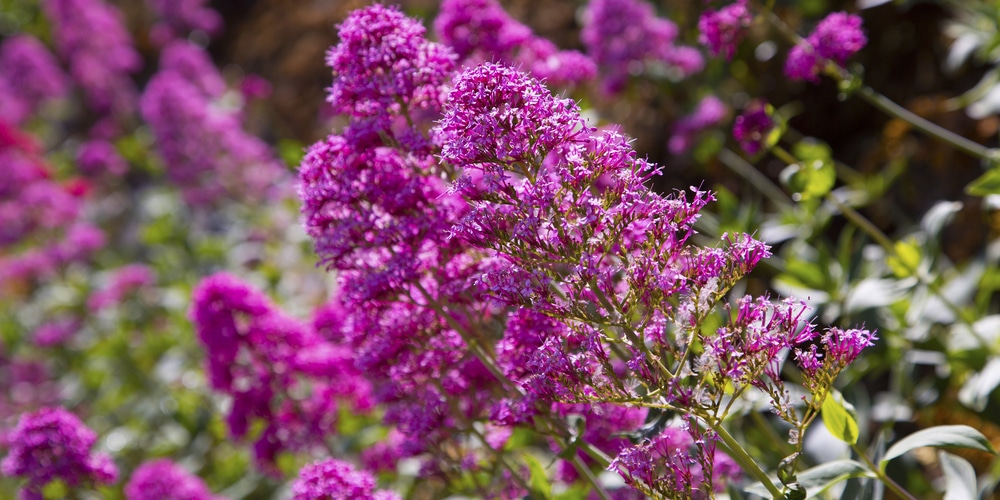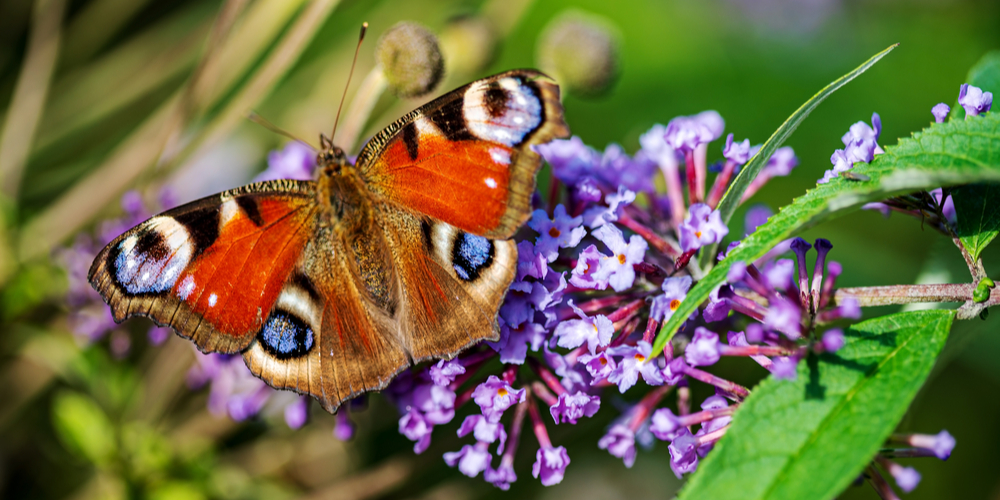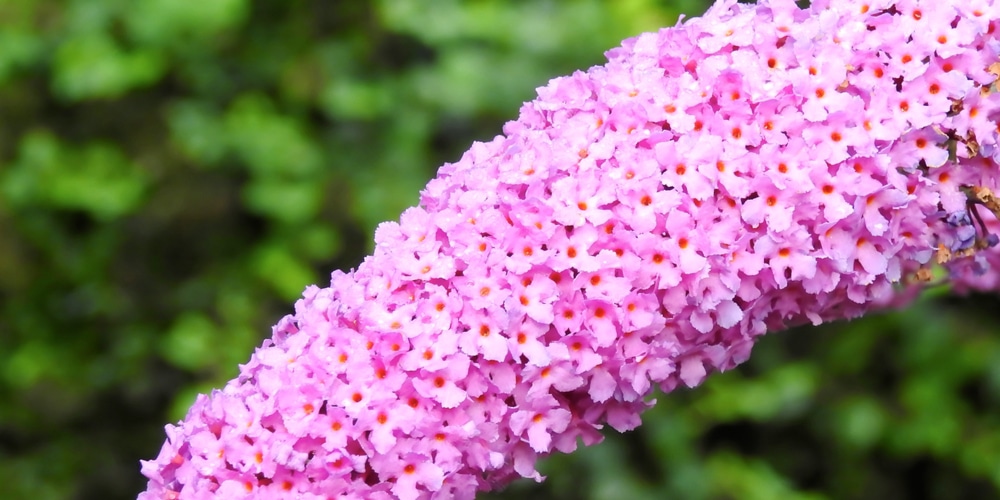It is not uncommon to spot Butterfly Bushes in landscapes nowadays. But did you know this flowering bush is not native to North America? Instead, this stunning flowering shrub comes from the mountainous regions of Asia. Today, there are about 140 species of Butterfly Bushes. You can find varieties blooming in pink, white, or even red. However, the “original” species’ flowers are purple.
As the name suggests, the Butterfly Bush’s bloom produces delicious nectar that attracts plenty of beneficial pollinators, including butterflies, bees, and hummingbirds. But if your objective is to build a butterfly garden, beware: these shrubs do not support the entire lifecycle of butterflies. They only serve as food to adults. Add other species to your yard to support the growth of caterpillars and larvae.
The Butterfly Bush Grows and Spreads Like a Weed
We must also mention that Butterfly Bush grows so aggressively that many states have banned them. Most species will tolerate drought and find their way to nutrients even in the harshest conditions.
Sometimes, they can grow so fast that they will threaten native species to the point of overcoming them. And if you know something about the balance of natural ecosystems, you might understand the impact of such an introduction.
Indeed under optimal conditions, Butterfly Bushes can disrupt the native environment. They don’t require much to grow and produce flowers that spread their seeds around. But do you want to learn more about these plants?
In this “Butterfly Bush Invasive Virginia” essential guide, you’ll get to learn everything you must know about growing this shrub and how to keep it under control.
Don’t forget that pruning and deadheading are crucial practices to maintain this plant in your garden. And if you can, always choose native alternatives over invasive ones. But jump to the following sections to learn more about them.
Butterfly Bush is Invasive in Virginia

Butterfly Bushes are stunning plants, no doubt about that. Plus, they are relatively easy to maintain and grow. They will thrive even in intolerable conditions and still produce plenty of vibrant and fragrant blossoms. But its aggressive spread isn’t all good.
Because they are not native to the United States, they alter the ecosystem and take over plants that have been around for centuries. In Virginia, they lack natural predators and will quickly dominate the landscape.
Plus, they can’t meet the nutritional needs of Virginia’s local birds and insects. Additionally, because they do not serve to host plants to caterpillars, they might negatively impact the reproductive cycle of most insects they attract.
If you decide to add one to your garden, you must be ready to spend time keeping it under control.
Annual pruning is a must for these plants. If you don’t keep them from growing, they can get to the size of a small tree.
In Virginia, this plant is a prolifically invasive species. Even though its sale isn’t banned yet, we advise against adding one in your garden. Also, don’t forget that if you don’t want to abandon your dreams of having a Butterfly Bush in your garden, you must look for seedless hybrids cultivated to control their spread.
But even if you choose to incorporate a seedless variety in your garden, you must keep it under control. Ensure you get rid of cuttings and trims and don’t allow them to take root elsewhere.
Also, make sure you pick flowers before they have time to spread their seeds. Practice deadheading all year round for best results.
If you live in a warm region, prune your plant to the ground in the winter. Don’t worry about overdoing it: Butterfly Bushes produce plants from woody branches and will get back to a large size in two or three months.
Butterfly Bush Invasive Virginia: The Bottom Line
As you should know by now, adding a Butterfly Bush plant in your garden isn’t a wise idea, even if you live in Virginia, where these plants are not officially banned (like they are in Oregon and Washington).
But if you want to add this plant to your landscape, don’t forget to get a seedless variety. And follow our recommendations to keep it under control.
For a better option, consider getting native plants that don’t destroy the natural ecosystem and support the life of native insects and small mammals.
Native alternatives (a food source even to caterpillars) include Milkweed, Butterfly Weed, Bee Balm, and Black-Eyed Susan. All such plants produce stunning blooms between spring and fall and will attract plenty of beneficial pollinators without threatening the local environment. You may also like to try growing apricot trees in Virginia.
Related Article: Butterfly Bush Fertiliser


